 It’s time to announce and dissect the next five spots from the Most-Wanted Marvel Omnibus secret ballot by TigerEyes. I covered #45-41 in the last installment.
It’s time to announce and dissect the next five spots from the Most-Wanted Marvel Omnibus secret ballot by TigerEyes. I covered #45-41 in the last installment.
This range includes a healthy handful of debuts, plus two books that have drifted downward from last year – both due to coverage in other mediums.
Marvel has released these oversized omnibus editions for over a decade now, with a staggering amount of their most-popular material now covered in the format – from Silver Age debuts to modern classics. Is your favorite character or run of issues already in an Omnibus? My Marvel Omnibus & Oversized Hardcover Guide is the most comprehensive tool on the web for answering that question – it features every book, plus release dates, contents, and even breakdowns of $/page and what movies the books were released to support.
And now, onto entries 40 through 36!
#40. Captain Marvel, Vol. 1
Last Year’s Rank: Debut!
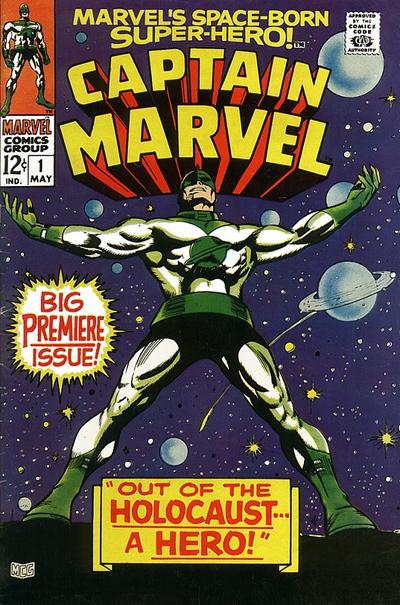 Definite Contents: Marvel Super-Heroes #12-13, Captain Marvel #1-33, Iron Man #55
Definite Contents: Marvel Super-Heroes #12-13, Captain Marvel #1-33, Iron Man #55
Possible Contents: Captain Marvel #34 and Marvel Graphic Novel, Vol. 1
What is it? A Kree military officer is assigned to observe Earth but winds up growing a conscience and becoming its protector against the Kree (and everyone else).
The Details:
This Captain Marvel is not the Carol Danvers version now heading towards her own Marvel movie, but Danvers does debut in this run as a supporting character.
The original Captain Marvel was an alien! He is Kree – the blue kind from the Guardians of the Galaxy movie, except he is a Caucasian-passing “pink” one that resulted from generations of crossbreeding. He starts out stronger and more durable than the average earthling, and his powers grow and adapt over the course of the run.
This material represents the first half of Captain Marvel’s series, which was just finished off in color collections by a sixth Marvel Masterwork last month. This half is the more highly-regarded material, largely due to the artwork. It begins with the titan Gene Colan, passes through Don Heck, and then cult favorite Jim Starlin takes over with issue #25.
For many, Captain Marvel effectively ends with Starlin’s departure one issue past this range and then resumes in 1982with him writing and drawing one of Marvel’s most famous standalone stories, Marvel Graphic Novel, Vol. 1: The Death of Captain Marvel. Sorry, spoilers! But, seriously, at this point every comic fan has heard the title before they’ve read the story – it’s mega famous. It’s also never before been collected in oversized format – and that’s where things get interesting.
Marvel could break the typical “only three MMWs per Silver Age omnibus” rule here and include #34 (also a Starlin story) and the graphic novel. That would make this omnibus exponentially more interesting to many classic fans who aren’t necessarily lusting after the rest of the content that would come with a Volume 2. It wouldn’t be the first time Marvel pre-empted the rest of the series to get to the good stuff – several paperback collections of this material hop from #34 to a pair of 1979 Marvel Spotlight issues to Death of with no intervening material. On the other hand, holding back that content would help ensure better sales for an overall weaker Volume 2.
No matter what Marvel decides, this is popular material and there is an audience for it. All three of the Masterworks covering the run are increasingly hard to find for a reasonable price. Would Marvel be a bit concerned about brand confusion of fans of the female Captain Marvel grabbing this and being puzzled? Maybe, but it also happens to co-star Carol Danvers prior to her receiving powers.
Chances we see this in 2017? ![]() The material is already remastered, people want it, and the name has begun to resonate beyond just comic audiences. It wouldn’t be a shock to see this Omnibus.
The material is already remastered, people want it, and the name has begun to resonate beyond just comic audiences. It wouldn’t be a shock to see this Omnibus.
Want to read it right now? Visit the Guide to Captain Marvel to get the details on how to pick up this entire run, or just dabble in the Starlin material.
#39. Iron Man by Matt Fraction & Salvador Larroca AKA Vol. 3 (sort of)
Last Year’s Rank: Debut!
Definite Contents: Invincible Iron Man #500-527, 500.1, and Annual 1, Free Comic Book Day 2010: Iron Man/Thor, Fear Itself 7.3 AKA Shattered Heroes: Iron Man, and Rescue #1, (written by Fraction’s wife, Kelly Sue DeConnick).
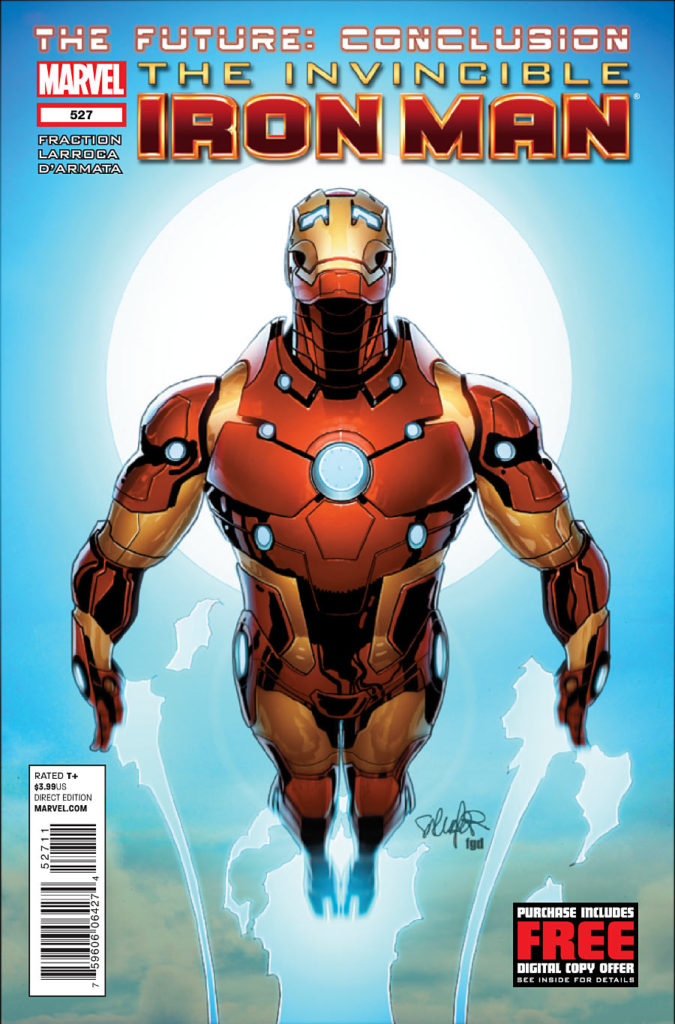 What is it? The slightly saggy back half of Matt Fraction and Salvador Larroca’s Eisner Award winning run on Iron Man.
What is it? The slightly saggy back half of Matt Fraction and Salvador Larroca’s Eisner Award winning run on Iron Man.
The Details:
Beware – you have now entered Completionist Country.
The riveting first half of Fraction and Larroca’s run on Invincible Iron Man is contained in a pair of oversized hardcovers which had the misfortune of being marketed as “Omnibuses” even though the actual books say no such thing on them. Then the oversized output of this run stopped, likely due to the fact that its critical reception tailed off a bit and the original release collections were lingering in stock.
That happened to be a point in time when Fraction’s stock with readers was at an unfortunate low point. In 2011, his big Marvel event Fear Itself wasn’t received positively (though it was just fine), and neither were his simultaneous runs on The Mighty Thor (which did kinda suck) or The Defenders (which was just odd).
Essentially, Fraction’s stock dropped precipitously and didn’t bounce back until Hawkeye in 2012, which for several issues everyone expected to bomb before they caught on that it was amazing.
Of course, collectors don’t care about all of that. You can’t collect half a run as Volumes 1 and 2 and just leave it there! That sentiment is precisely where this vote is coming from. People want a third omnibus (which is the length of both previous hardcovers combined) to wrap up this self-contained run and complete their bookshelves.
That’s what votes for this volume are all about: completionism.
Would that be the only reason to pick this book up? Not entirely. Even taken on its own, 29 issues with a single writer/artist team is virtually unheard of in the current world of Marvel (in addition to the 33 that came before). Sure, some writers stick around for a whole volume, but Larroca is seriously the only Marvel artist who can maintain the pace aside from the under-appreciated Leonard Kirk.
Larroca’s stuff is good. Yes, people can argue that poses get same-y or faces look traced, but to a casual reader he delivers cinematic comics in every damned issue, month-after-month. It’s no mistake he’s wrapping up a run of Darth Vader right now – he’s Marvel’s biggest, most on-time gun of all.
With Iron Man continuing to be the shining start of the Marvel Cinematic Universe, might we get this run gift-wrapped into a final hefty volume? Signs still don’t point to yes, because so many potential oversize Iron Man runs are still out there. There’s the third Silver Age volume from our last installment, another one later on this list, the uncollected second half of his 1998 series (the first half is omni’d), a tidy 2005-2008 run that includes Civil War, a self-contained and movie-esque Kieron Gillen run that followed Fraction, and now a two-title assault by Brian Bendis.
Chances we see this in 2017? ![]() Basically, this is amongst the last Iron Man runs Marvel is likely rushing to re-collect. Maybe Fraction’s stock is high enough now that it doesn’t matter thanks to Hawkeye and Sex Criminals, but I still don’t think we’re going to see this one soon (and I even voted for it!)
Basically, this is amongst the last Iron Man runs Marvel is likely rushing to re-collect. Maybe Fraction’s stock is high enough now that it doesn’t matter thanks to Hawkeye and Sex Criminals, but I still don’t think we’re going to see this one soon (and I even voted for it!)
Want to read it right now? If you aren’t worried about a perfectly-matching shelf, it’s easy and still pretty cheap to collect this in its original run of normal-sized hardcovers. My Iron Man guide includes them all.
#38. (tie) X-Factor (1985) by Peter David OR by David, DeMatteis, & Dezago
Last Year’s Rank: Debut!
Probable Contents: X-Factor #70-89 or 92 or 111 (I’ll explain below) and Annual 8 (and maybe 9).
What is it? Peter David pens a government-sponsored team of X-Men rejects who can’t help but be charming (except for Quicksilver, he’s a jerk).
The Details:
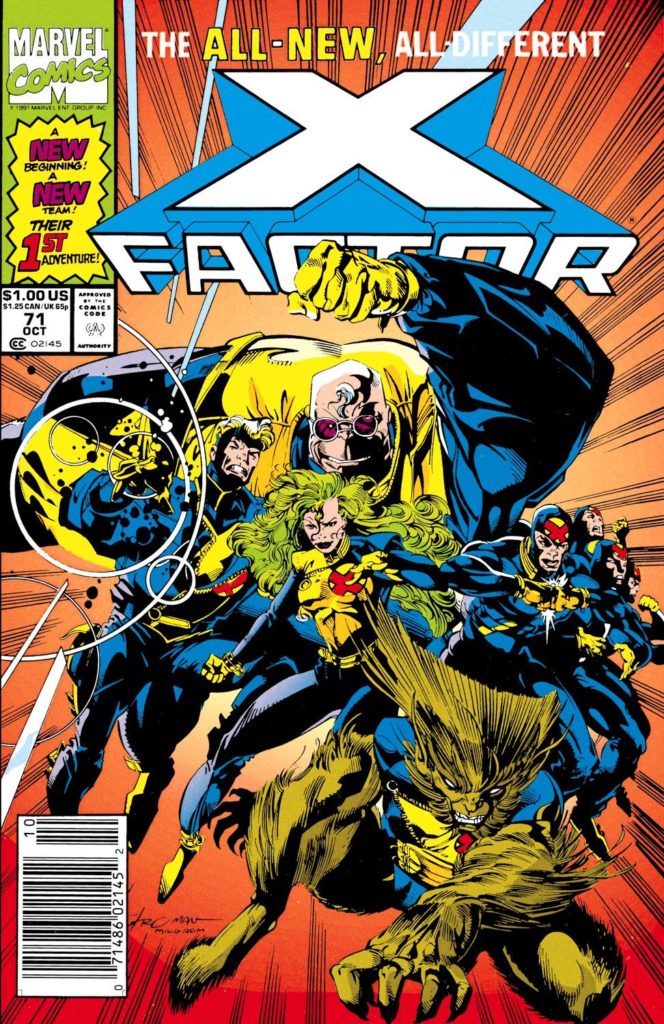 In 1991, Marvel had three X-Men teams, but their purposes and casts had come unravelled.
In 1991, Marvel had three X-Men teams, but their purposes and casts had come unravelled.
Uncanny X-Men starred the big name characters like Wolverine and Storm, except the team was presumed dead (again) and hadn’t been assembled together for over two years of the run.
New Mutants was about younger mutants who were students at a school that wasn’t even functioning.
X-Factor starred the original five X-Men, who were being heroes because they didn’t know how to be anything else, and were also raising the baby of Jean Grey’s clone who had turned into a demon queen and almost destroyed the world.
Got it?
1991 shook all of that up, with all of the big characters headed back to the pair of Uncanny X-Men and X-Men, Vol. 2 – including the entire cast of X-Factor. Marvel canceled New Mutants to launch the better-branded X-Force. What would happen with X-Factor?
In stepped Peter David AKA PAD, then mostly known for entering his fourth year on Incredible Hulk (it would win an Eisner in 1992) and runs on Spider-Man titles and Action Comics for DC. He accepted all of the cast-offs from the X-Men merger: Havok, Polaris, Wolfsbane, Jamie Madrox AKA Multiple Man, and Strong Guy. It wasn’t team of characters you’d typically feature front and center to sell a lot of comics, especially stripped of their well-known costumes by oddball artist Larry Strohman, called up from Epic Comics’ Alien Legion and a string of fill-ins.
Those cast-offs made for an excellent comic. This was Peter David’s first significant run on a team book, and fans quickly learned that no one wrote relationships like he did. PAD could handle action beats to, but ask anyone what they remember from this run and they will all tell you about a standalone issue where the members are evaluated by their psychologist.
I just sold you on that pretty hard, right? I bet you didn’t expect me to follow-up with this statement: “And it would make a really shitty omnibus.”
Well, it would. PAD wrote X-Factor for 20 issues starting with #70 and that run was interrupted for three issues for X-Cutioner’s Song at #84-86 (already collected in oversized format and useless without its accompanying crossover issues) before cutting off in the middle of a story when he left the book after #89 (and an existing Fatal Attractions oversize hardcover already covers #87-92).
That means we’re talking about an omnibus for the 14 non-OHC issues of #70-83 & Annual 8 (13, really, since #70 is in X-Men by Claremont/Lee Omnibus, Vol. 2 where it belongs as an epilogue to the Muir Island crossover). And, all of these issues have been reprinted in color already in a series called X-Factor Visionaries – Peter David.
That makes this pick dead in the water, right? Well…
With omnibuses now easily reaching into the 40-issue range, there’s an opportunity to have this book collect #71-83, 87-111, and Annuals 8 and 9. That would take the X-Factor story from PAD’s debut through the beginning of Age of Apocalypse, which took over all of the X-Men books for four months in 1995. It would include art by Joe Quesada and Steve Epting. It would cover issues that have never been collected before (#93-105, 107, 110-111 and Annual 9). And, it would leave a reasonable footprint of #112-149 uncollected, which could be covered in two trades or one future omnibus (it stars Mystique and Sabretooth!).
I’d buy the heck out of that book. Let’s make it so.
Chances we see this in 2017? ![]() It wouldn’t be the craziest possible thing Marvel could do, but I think there are a few other X-Men books higher on their oversized priority list at the moment. Wolfsbane’s appearance in the New Mutants film could help grease the wheels.
It wouldn’t be the craziest possible thing Marvel could do, but I think there are a few other X-Men books higher on their oversized priority list at the moment. Wolfsbane’s appearance in the New Mutants film could help grease the wheels.
Want to read it right now? Head to the X-Factor Guide to see all of the permutations of collections I mentioned above.
#38. (tie) Conan The Barbarian, Vol. 1.
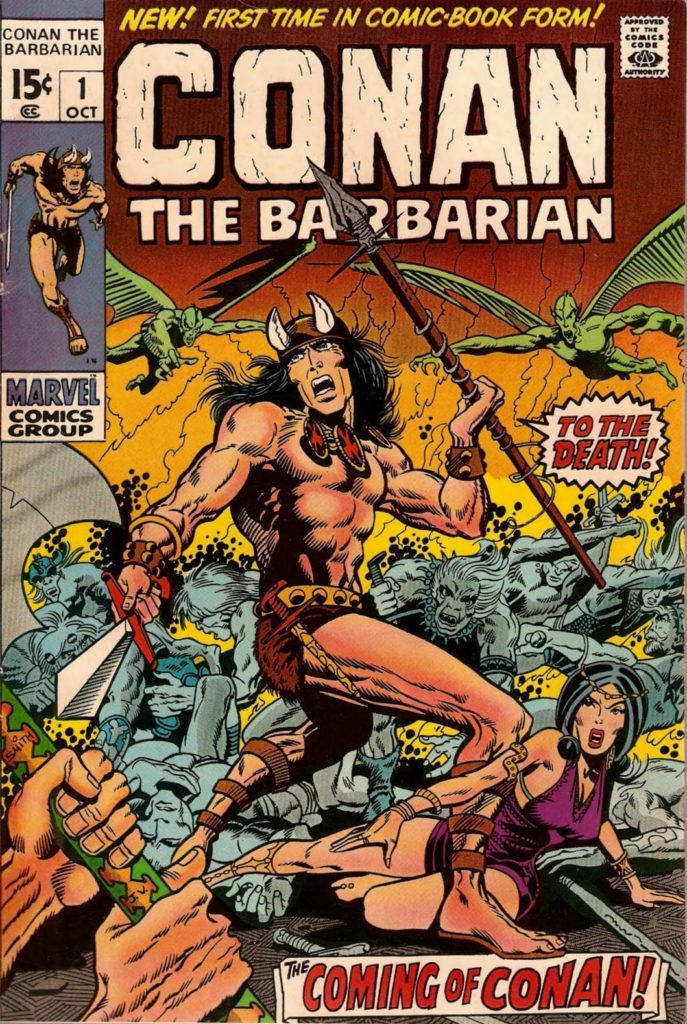 Last Year’s Rank: Debut!
Last Year’s Rank: Debut!
Possible Contents: Conan, The Barbarian #1-24, or as far as #42. Possibly also material from Savage Tales (1971) #2-3 (and maybe #1).
What is it? Marvel’s long-lost license to the pulp Barbarian was significant for a 20-year run that started the swords-and-sorcery trend, groundbreaking art from Barry Windsor-Smith, and being written for over 150 issues by Roy Thomas.
The Details:
Let’s get one thing out of the way first: Marvel doesn’t have the rights to reprint this material. That’s because Conan was a licensed character, and the license currently lies with Dark Horse Comics.
I am far from a Conan scholar – I got schooled in a message board discussion when I left out an issue of Savage Tales in my suggested contents! Yet, even I can say this material definitely deserves notice and oversize treatment.
It’s neither a direct adaptation from novels originally by Robert E. Howard or entirely its own story – it lies somewhere in the middle. It helped to push Conan from mainly a pulp novel character to a cross-media star, paving the way to his Schwarzenegger-starring film in 1982. It also set off a so-called “sword-and-sorcery” trend in comics in the 1970s that Marvel never quite recaptured with another series.
Unfortunately, that’s not an argument for an omnibus of this material. At least, not a Marvel Omnibus. All but one Windsor-Smith issue have already been reprinted by Dark Horse in a two-volume, oversized Archive series in 2010. I own some Dark Horse Archives and Library editions and they are exponentially nicer books than a Marvel omnibus (and cost significantly less).
There is literally no way Marvel could improve on them other than smooshing them into one omnibus that’s slightly smaller and with worse paper. And, the Conan series as a whole has already been collected through issue #241 of 275 by Dark Horse in standard-size Chronicles of Conan trade paperbacks – currently on Volume 31!
That is freaking insane. It makes me want to be a Conan fan just to buy them. Why can Dark Horse sell these books for 13 years while Marvel can’t even plug the remaining gaps in the first 281 issues of Uncanny X-Men?
Chances we see this in 2017? ![]() You know what? I’m happy Marvel can’t collect this material. They’d just mess it up.
You know what? I’m happy Marvel can’t collect this material. They’d just mess it up.
Want to read it right now? Me too, actually. You can either grab Barry Windsor-Smith Conan Archives Volume 1 and Volume 2, or the standard-sized The Chronicles of Conan Vol. 1, Vol. 2, Vol. 3, and Vol. 4 to cover the BWS material. Note that these editions have been digitally re-colored. See the Guide to Conan for more details.
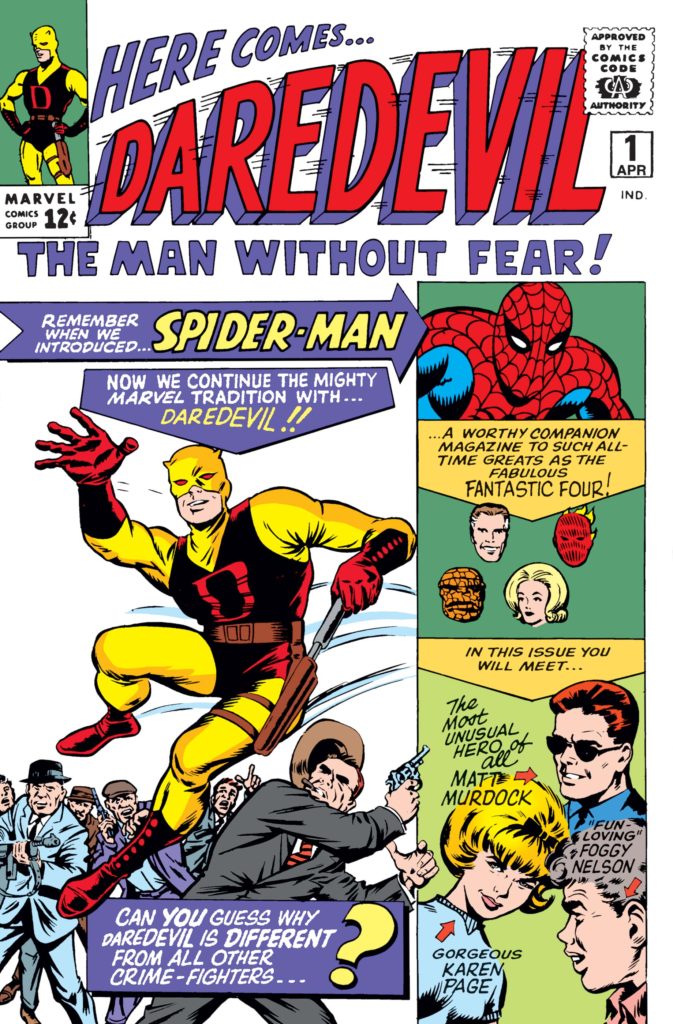 #37. Daredevil (1964), Vol. 1
#37. Daredevil (1964), Vol. 1
Last Year’s Rank: #23
Definite Contents: Daredevil (1964) #1-31 & Annual 1
What is it? The Man Without Fear’s debut and earliest issues – long before the gritty Frank Miller take that tends to define the character.
The Details:
It is extraordinary that Daredevil remains Marvel’s one major Silver Age hero with no classic omnibus to call his own, especially when he just wrapped an acclaimed comics run and two seasons of television.
I’ve always assumed we never got a Dardevil Classic Omnibus because his earliest material simply isn’t all that compelling or noteworthy and Marvel saw how Hulk’s similarly un-classic classic omni lingered in stock.
For most of the other Silver Age characters, it was their initial runs which contributed their primary set of memorable mythology. For Daredevil it truly was Frank Miller’s run that defined our modern conception of the character.
Many describe this early territory as “blind Spider-Man” – which is to say, he didn’t have a lot of distinguishing characteristics other than being a hero of the swinging 60s who did a lot of swinging around NYC. And, he wasn’t nearly as witty as Peter Parker! Daredevil’s rogue’s gallery of characters like The Owl and Stiltman isn’t all that compelling (though, Jessica Jones’s nemesis Purple Man originated in this run). You get the sense that Lee didn’t want to throw anything but the most obvious physical opponents at Daredevil, as he wasn’t quite sure how to write him out of a tougher bind.
If anything, if we were getting an old Daredevil omnibus I’d want the material his Masterworks line has just begun to hit – his hip San Francisco period co-starring Black Widow.
Chances we see this in 2017? ![]() Maybe Marvel finally wheels this out for the third season of his show, but it’s more likely we’d see some other Daredevil collections yet to come on the survey. Here’s a spoiler: This book has been announced for January 2017! I guess those other potential omnibuses can wait.
Maybe Marvel finally wheels this out for the third season of his show, but it’s more likely we’d see some other Daredevil collections yet to come on the survey. Here’s a spoiler: This book has been announced for January 2017! I guess those other potential omnibuses can wait.
Want to read it right now? This is entirely covered in Masterworks volumes and they’re not too hard to find. Head to my Daredevil guide to see them all.
#36. Silver Surfer (1987) Vol. 1 AKA by Steve Englehart
Last Year’s Rank: #26
Probable Contents: Marvel Fanfare #51 and Silver Surfer (1987) #1-31 & Annuals 1-2.
Possible Contents: If not exclusive to Englehart, this could could also include any or all of Silver Surfer (1987) #32-33, 38-39, & 41-43, and Super-Villain Classics #1; Silver Surfer (1982) #1, and material from material from Epic Illustrated #1 and Marvel Comics Presents (1988) #1. There’s a chance it could include Silver Surfer (1988) #1-2 (more on that below).
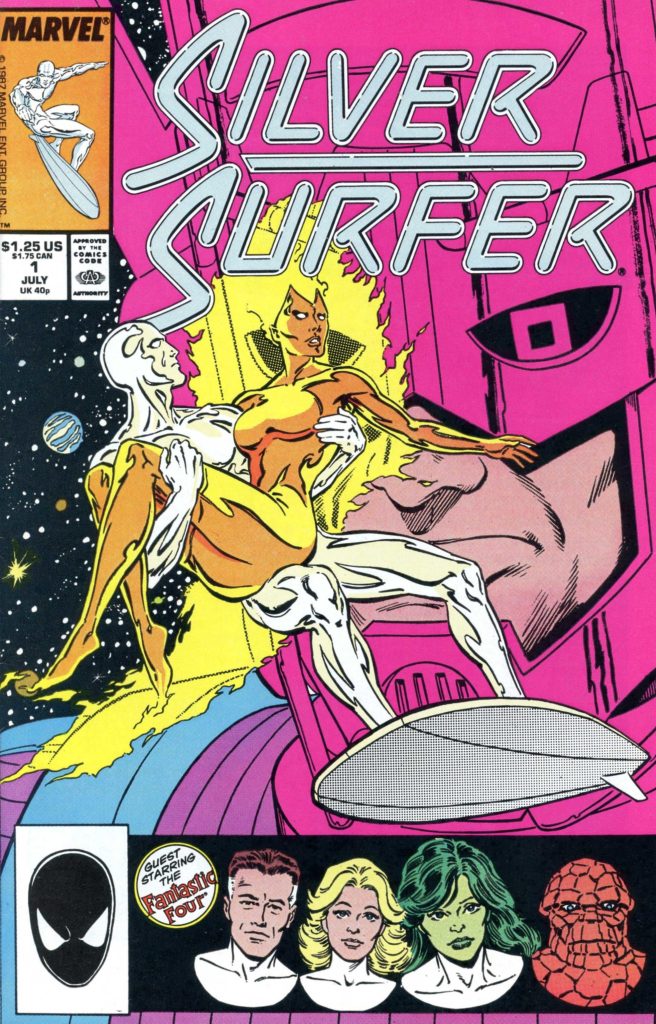 What is it? Silver Surfer finally convinces Galactus (and Marvel editorial) to allow him to escape the confines of Earth to travel the universe, where he becomes embroiled in cosmic adventures and intergalactic politics.
What is it? Silver Surfer finally convinces Galactus (and Marvel editorial) to allow him to escape the confines of Earth to travel the universe, where he becomes embroiled in cosmic adventures and intergalactic politics.
The Details:
Silver Surfer became a Defender and then an occasional guest star after after the end of his first series in 1970, dropping in on the Fantastic Four every fifty issues or so.
How had he gone over 15 years without an ongoing series to call his own? Stan Lee had an understanding (or, at least, thought he did) with Marvel’s editorial team that he would be Surfer’s sole solo scripter … until Steve Englehart started this 1987 series.
Steve Englehart was a gift for the character. In the first issue he broke Silver Surfer free of Galactus’s edict (and editorial’s) that he be confined to Earth – still in place from his first story in Fantastic Four! While Lee had a ball writing Surfer as a wandering, earthbound philosopher, Englehart finally freed him to travel the stars in a way he was uniquely suited to do. That also enabled Silver Surfer to finally use the Power Cosmic to do epic, wide-screen combat with formidable foes.
Englehart’s run serves up massive space drama, with Silver Surfer returning to his homeworld. He becomes embroiled in an ongoing Kree/Skrull conflict and a plot by The Elders to slay his former master, Galactus. However, now it was Englehart who was colliding with an artificial constraint – he couldn’t use cosmic concepts originated by Jim Starlin in his 1970s plots for Captain Marvel and Warlock.
As a result, Englehart eventually winds down his run in #31 in a way that makes it a satisfying, self-contained read. Starlin himself would take over with #34, using Silver Surfer to build up to the famous Infinity Gauntlet.
In fact, the Infinity Gauntlet omnibus is also a de facto Silver Surfer volume, since it includes #34-38, 40, and 44-60. Some of those gap issues are still by Starlin, but they didn’t include Thanos or other Gauntlet buildup. A version of this volume not exclusive to Englehart could easily collect them all to give us an unbroken run of oversized Surfer through issue #60! Also, other Surfer collections of the period have included some other preceding stories listed above, including a Lee/Byrne 1981 one-shot.
Lee himself took another turn at scripting Silver Surfer in 1988 (yes, while this series was ongoing – who is going to say no to Stan Lee) with famed illustrator Moebius. That two-issue story, Parable, does not fit well with Surfer’s narrative of the period and to this day isn’t definitively part of canon. Yet, it won an Eisner award and would certainly bring even more fans to a Surfer omnibus if it was included.
Chances we see this in 2017? ![]() Marvel very recently released the first half of this content in an Epic collection, so it probably wouldn’t make sense for them to release an omnibus so soon after. Also, it’s hard to know if Silver Surfer’s fan support is such that an omnibus of his post-Silver-Age material would be a strong seller – perhaps the Epics are a market test.
Marvel very recently released the first half of this content in an Epic collection, so it probably wouldn’t make sense for them to release an omnibus so soon after. Also, it’s hard to know if Silver Surfer’s fan support is such that an omnibus of his post-Silver-Age material would be a strong seller – perhaps the Epics are a market test.
Want to read it right now? Can can pick up Silver Surfer Epic Collection, Vol. 3 – Freedom to read half of this (through #14), but buyer beware – Marvel releases the Epic collections in any order they please, so Vol. 4 isn’t necessarily next. See the Silver Surfer Guide.
![]()
[…] Daredevil Omnibus Vol. 1 Probable Contents: If the page count of 1088 is to be trusted this will break the rule of 3 MMWs to a Silver Omnibus. That’s not as big of a surprise as it sounds – Spider-Man, Vol. 1 also included four MMWs. That would make the content Daredevil (1964) #1-31 & Annual 1, plus Fantastic Four #73. See my full write-up on the contents of this volume. […]